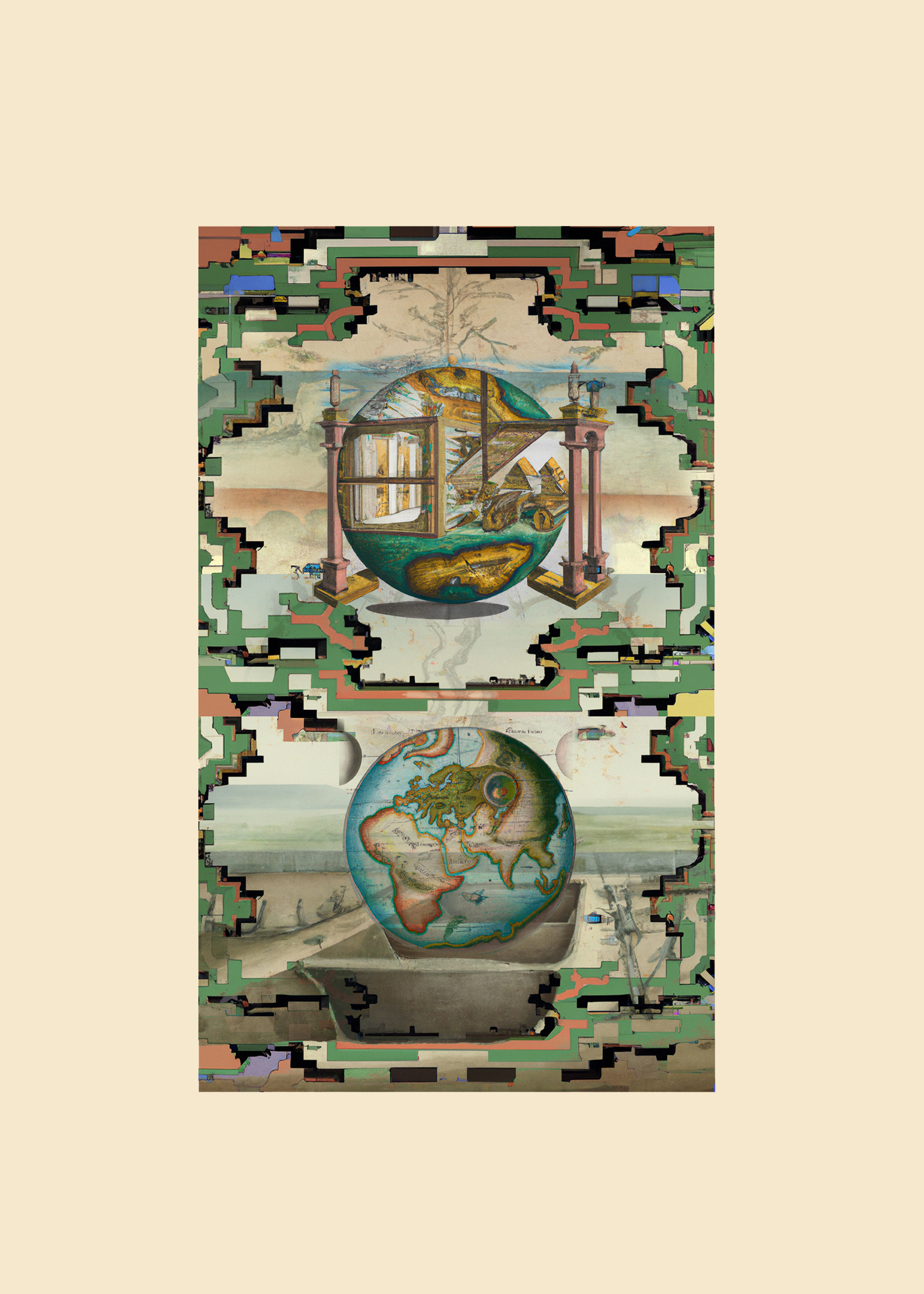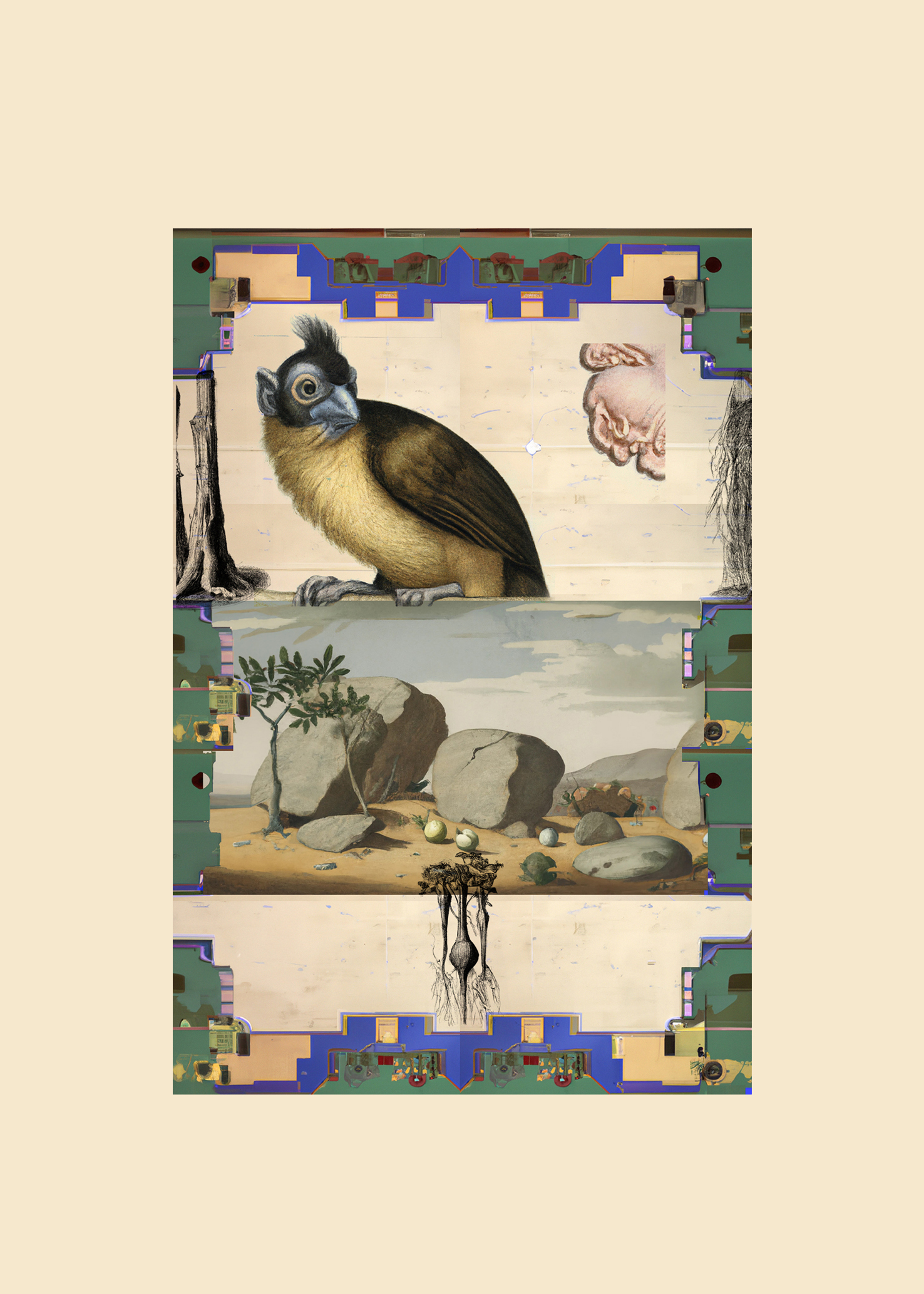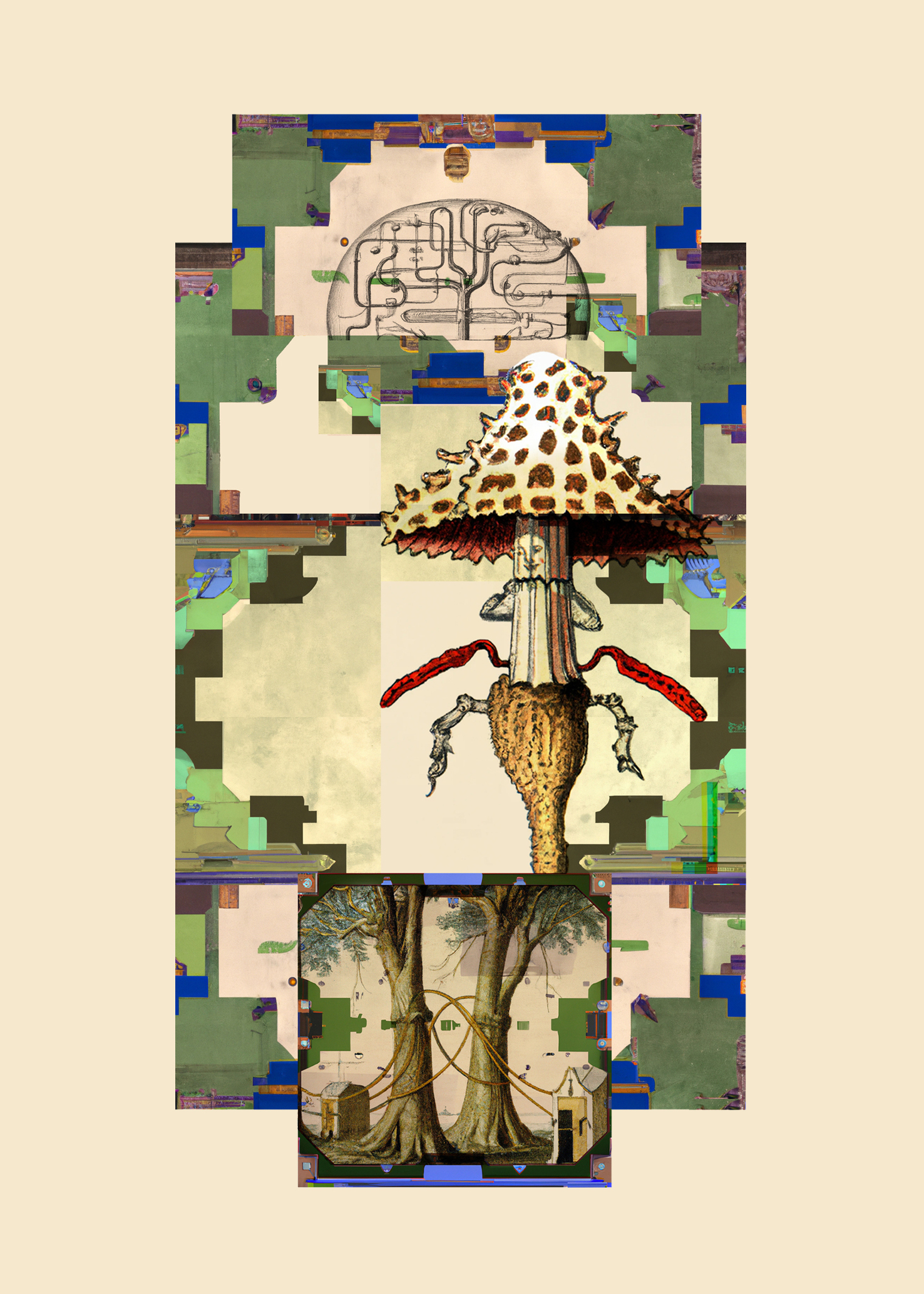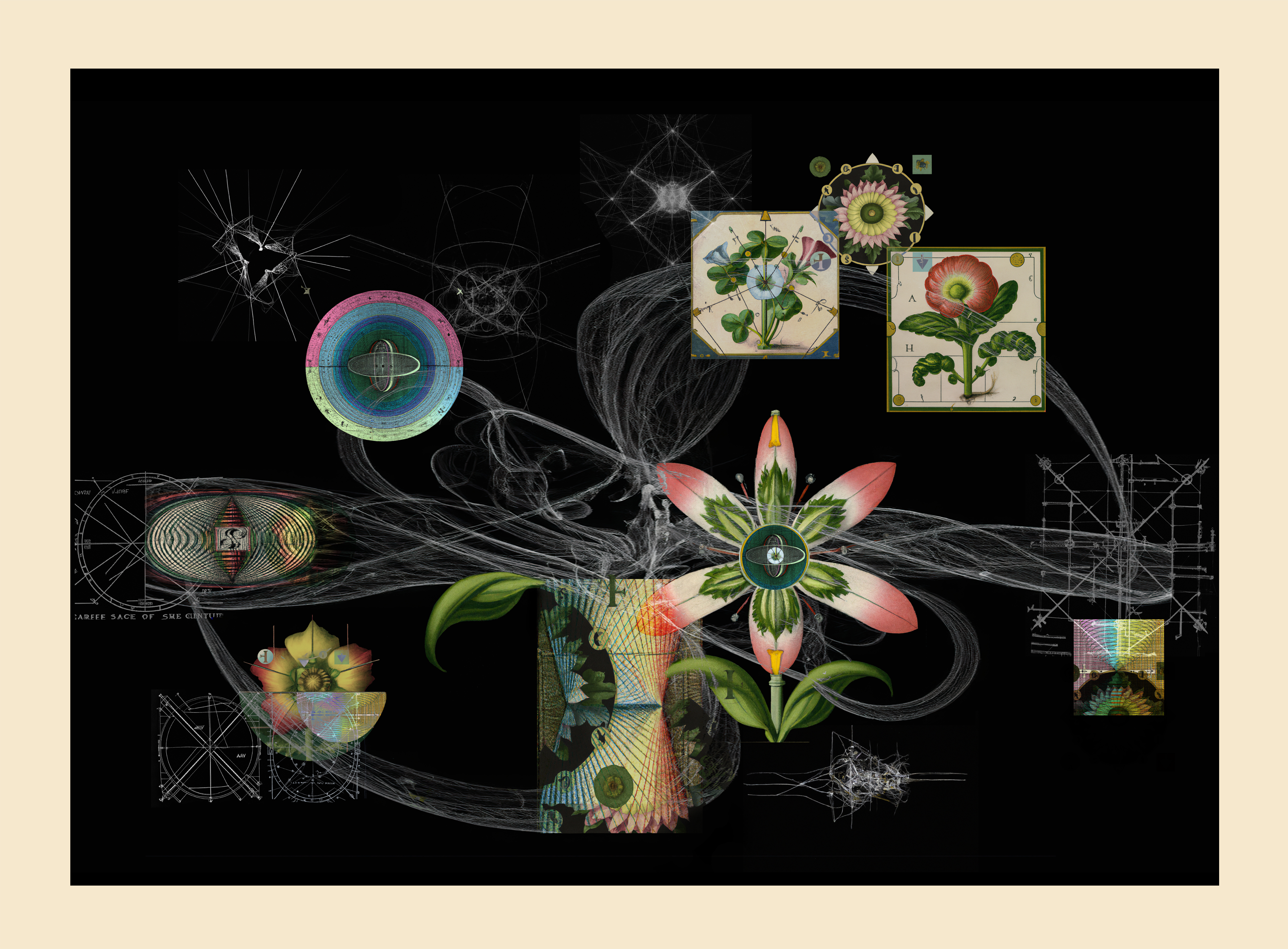FAHRENHEIT 451
2022


ESPACE_L
ARTISTS: ANA D & NOORA K, NACOCA KO, DENIS JUTZELER, CATHERINE REBOIS AND JULIEN SPIEWAK
The Fahrenheit 451 exhibition is inspired by the book that bears its name, and encourages us to question our way of life. 451 in degrees Fahrenheit refers to the auto-ignition temperature of the paper. In a world ruled by social networks and rapid consumerism where mass culture creates a hunt for the intellect, the exhibition presents only works using paper as a support by recreating the link between the human, History, intellect and creativity.
--------
--------
NFT Biennale, UltraSuperNew Gallery, JAPAN
NEW CURRENTS Festival (presented by Warhol Foundation) Santa Fe, NM
Each print in the exhibition is an edition of 5 + 2AP. Printed on fine art paper in high resolution, the sides are hand-torn to signify the dialogue with botanical drawings, scientific diagrams, and lithographs from books and prints of the 1700s. AI prompts include phrases such as “18th century color illustration of: ... quantum information emanating from the void, a satellite, a forest made of fiberoptic cables, quantum photosynthesis, a tree that is also a fountain...” Compositions in photoshop reference new mythologies and timeless archetypes.
“In Creation, God speaks and things come into being that were not there before. Similarly, in word-prompted AI art, one writes words, and new images form.
Where do these images come from if AI is not sentient(yet)? Trained on (mysteriously sourced) image databases, these images come from some kind of human aggregate, a collective subconscious, working like a god made in the image of humankind.
The power of the technocracy lies in the ambiguous nature of transformations between data, the physical, and what lies in between, crossing strata that are almost imperceptible to humans. It requires what Benjamin Bratton calls “planetary computation.” The scales of energy alone are unfathomable, from rare-mineral mines, to giant data warehouses, through our individual or collective energies in front of a screen, to the satellites that connect us. We already rely on AI and surveillance to make sense of this data for us, to analyse it and put it into terms that we can understand.
As we relinquish more and more power to these systems, do robots become more like humans, or do humans become more controlled like robots? What makes a human? Our freedoms, our stories, myths, and dreams. Our relationship with nature, the cosmos, within our societal “tribes,” and within ourselves creates a new mythology, but the archetypes remain the same. Are we creating an AI-of-Providence, searching for a new higher power to guide us?
The works in these series are created by generating hundreds of AI-images, and then working them through Photoshop into concise compositions. They use AI, but also explore its familiarity with older art forms, dialoguing with what could soon be the printed arts of the past. How are the slow arts of etchings and lithography recreated? What do they have in common with pixellation and glitches? An image from AI can be sublime or haunting, reaching into a human soul. If even the artist’s work can be replaced, maybe we will no longer consider ourselves at the center of everything, but return to see within the center of ourselves.”
- Nacoca Ko
- Nacoca Ko




